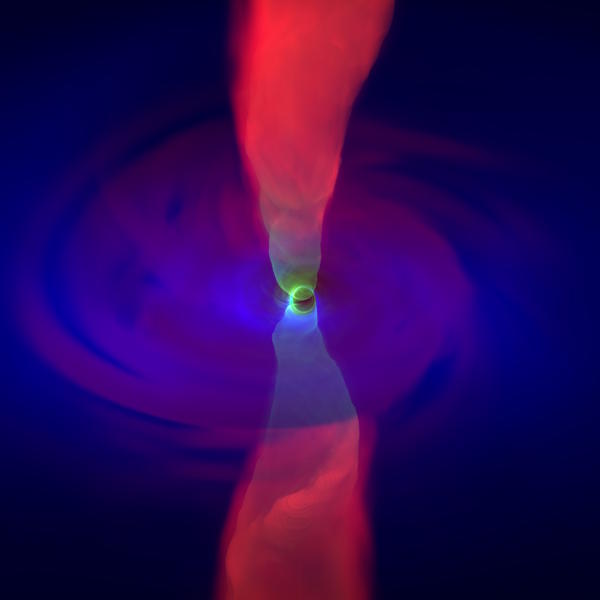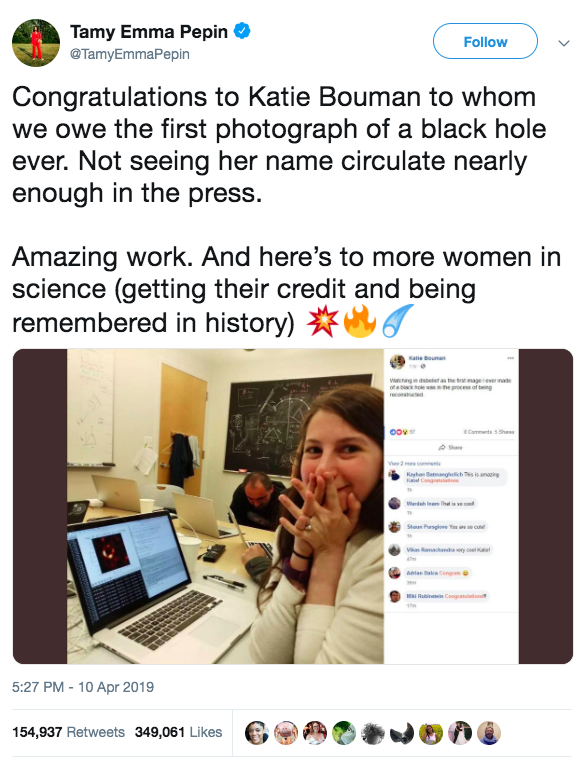The announcement that the first ever real black hole picture released was going to be in 2019 is up there with the major discoveries of our time. Just like the finding of the Higgs boson, and the confirmation of gravitational waves, this is a huge event in science communications and the announcement was choreographed internationally.
The scale of coverage was always going to depend on the actual black hole picture released itself, because it’d want to be fairly spectacular to impress people. Beforehand it was thought likely by some to look like this type of scenario pictured below which is a simulation…

In the end the first ever real black hole picture released turned out to look more like an orange donut. Mind blowing if you knew what you were looking at, but not quite the spectacular black hole photo non-scientists have come to expect from artist’s impressions.

So because of my own background in science communication, I thought it’d be useful to take a closer look at the launch campaign around this black hole photo being released by the Event Horizon Telescope team to see what worked well and how it could be used to inform the future announcements of scientific results more generally.
1. Build-up to the black hole picture release
The build-up to this announcement has been very impressive. Starting with a Media Advisory issued on 1 April 2019, the story pretty quickly got a lot of advance traction in many different places online. (And that’s despite the press release being issued on April Fools Day.)
It’s worth noting that the media advisory issued by the European Research Council (ERC), for example, doesn’t actually reveal much information. It simply takes the form of an invitation to be at the press conference “on first results from the Event Horizon Telescope” or to watch it live online. The reader is left to infer for themselves how important the “first results” could be from the fact that this is being announced simultaneously globally.
Interestingly, no embargo was requested – and embargoes on press releases are generally on the way out given the pressures online publishers find themselves under. Nature, for example, is having to lift embargoes more frequently due to what they call “early reporting.”
2. Announcement of the first real black hole picture released
Six press conferences were held around the world at the exact same time to release the results. From Brussels to Washington official press conferences coordinated making the announcement itself. And the Event Horizon Telescope (EHT) project is encouraging people to organise their own “satellite” events too.
If you were in any doubt that this was going to be an announcement of pretty big news, you needed only to look at the clamour of senior stakeholders all wanting to be part of the launch press conference. Plus the live feed on EUtube was not-so-subtly titled “Breakthrough discovery in astronomy.”
The European press conference was exciting to watch live on YouTube for seasoned science buffs like me because we knew something big was coming. In their excitement, the speakers spoke quickly, and the international timing coordination proved tricky – they effectively had to make small talk to pad out the gaps before the exact moment they were allowed reveal the first black hole picture in international sync.
The reveal of the black hole picture itself was done with style. Instead of simply cutting away to a PowerPoint slide of the image, they used a pretty slick video to give context to exactly where the black hole was located in the sky. You can see it at about 8 minutes into the reply of the live stream…
And that was it – within minutes the story was the main piece of news on websites around the world thanks in large part to the preparation and “trailing” that had been done in the days leading up to the announcement by the ERC and others.
3. Development & Long Tail of the black hole picture released
One of the biggest challenges with a “breakthrough” story like this is sustaining interest after the announcement itself. There’s a risk that with the big bang approach (no pun intended) that the news will get a lot of coverage on day one but that the amount of coverage will rapidly drop off.
That’s why it’s particularly interesting to see how the story developed in the days and weeks after the press conference. As Frank Dillon has discussed on his PRII course “Ensuring Your Story Lands” for many announcements this can be pre-planned, for example, by offering in-depth “profile-type” interviews with some of the people involved after the announcement and other additional angles to the story.
But this story got a whole new lease of life by accident when the media found out about the important role of Katie Bouman in developing the type of algorithms used to create this image. The photo of her seeing the black hole picture released for the first time was quite moving, and instantly drew extra attention to the story.

So much so that more questioning articles started appearing along the lines of this New York Times syndicated piece in the Irish Times about how “How Katie Bouman accidentally became the face of the black hole project“. But singling out one scientist out of the hundreds involved did make some people uncomfortable, not least of all Katie Bouman herself who is quoted as texting the New York Times journalist to say that “Focusing on one person like this helps no one, including me.”
This announcement of the first black hole picture released is one of the biggest developments in the world of astronomy for quite some time. And one of the biggest science communication “success story” case studies in recent years too.
But as the story of Katie Bouman shows, people – journalists included – still expect discoveries to be made overnight by one scientist.
That just doesn’t reflect the complexity, diversity and scale of modern scientific research.
By analysing how this story unfolded (from the pre-planned press conference to unexpected focus on Katie Bouman) we can learn how to make more scientific announcements in general get the attention they deserve.
Updated 13/4/2019: Post-announcement details and analysis added.
